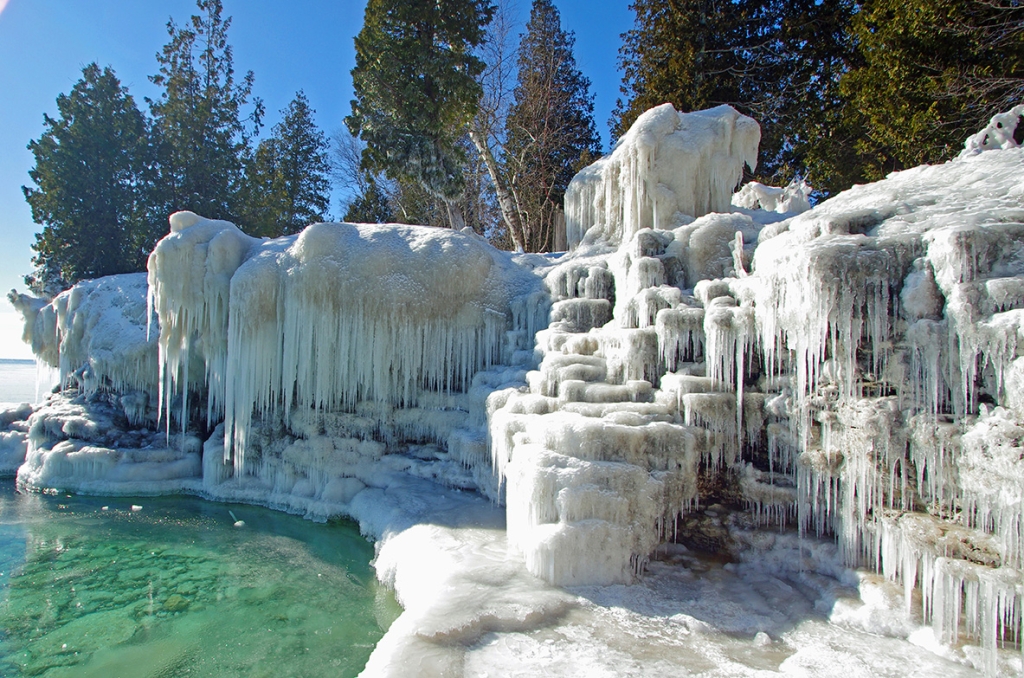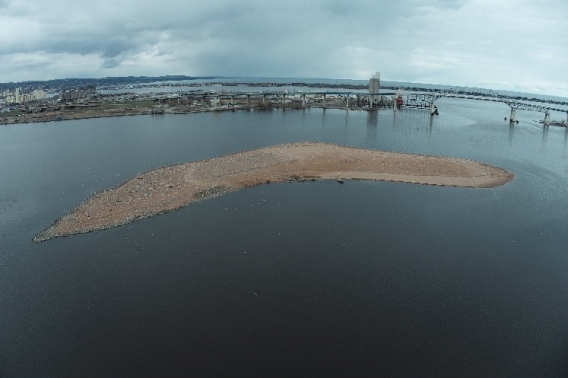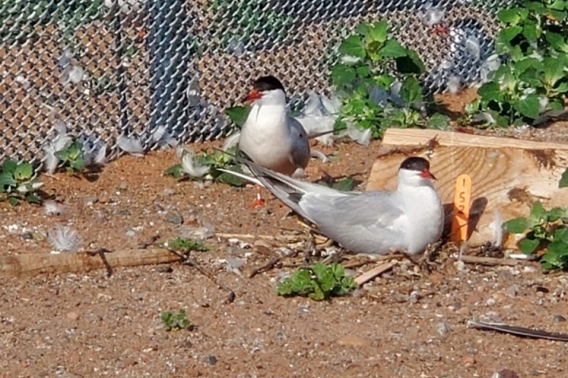EM Insight 2023 Quarter 1: January - March
Quarterly news and highlights from the Environmental Management (EM) Division
The EM Insight is a quarterly report from the Wisconsin Department of Natural Resources Environmental Management (EM) Division that profiles some of the great results that our staff, teams and partnerships have achieved. The division is pleased to present the following highlights of our work from January - March 2023.
In this edition
- Headline News
- Assistance to Communities
- Annual Awards and Awareness Campaigns
- Social Media Spotlights
Headline News
Emergency Rule for Type 1L Cement Now in Effect
In January, an emergency rule to allow the use of Type IL cement for grouting, filling and sealing wells went into effect. Companies that manufacture cement for sale and distribution in Wisconsin and surrounding states have switched from producing Type I cement and are now only producing Type IL cement to reduce the carbon footprint of their product.
As a result, Type I cement is becoming increasingly scarce or completely unavailable to well drillers. However, Type IL cement does not currently meet the compliance requirements of Chapter NR 812 of the Wisconsin Administrative Code. While the department works on revising NR 812 permanently, the emergency rule will allow well drillers to use Type IL cement to grout, fill and seal wells. The department anticipates that the Permanent Rule will go into effect in late 2023 or early 2024.
Degraded Fish and Wildlife Populations Impairment Removed from St. Louis River Area of Concern
The Degraded Fish and Wildlife Populations Beneficial Use Impairment was removed from the St. Louis River Area of Concern earlier this year. This is the fourth impairment removed for the Area of Concern, marking progress in cleaning up historical pollution and restoring waterways. After the remaining five impairments meet their targets and are removed, then the St. Louis River can be removed from the list of most polluted sites on the Great Lakes.
Projects to address this impairment included the creation of new land for piping plover at Wisconsin Point and common tern at Interstate Island. These projects were constructed from clean material dredged from navigational channels to provide places for the rare birds to raise their young, rest and refuel during their migration journeys. Surveys and studies were also completed to determine the area's improved capacity to support healthy fish and wildlife populations.
Additionally, several other efforts to restore the river and estuary have been underway for decades, including remediation of contaminated sediment, water quality improvements and restoration of fish and wildlife habitats.
To learn more about the status of the remaining work to be completed in the St. Louis River Area of Concern, check out the Remedial Action Plan. This plan is updated annually with community input to summarize progress over the last year and share remaining activities that need to be completed before the Area of Concern can be delisted. Federal Great Lakes Restoration Initiative funding, launched in 2010, helps communities clean up pollution in Areas of Concern and restore waterways. For more information about the ongoing work to restore the health of the St. Louis River, visit the St. Louis River Area of Concern webpage.
Assistance to Communities
New Waste And Materials Management Complaint Submittal System Launched
In January, the Waste and Materials Management Program launched a new online complaint submittal system. The program receives hundreds of complaints per year about waste issues and open burning, but also often receives complaints that should be directed to other programs or agencies. The program developed an interactive online tool to provide faster customer service and make it easier for staff to focus on high-priority complaints. The complaint submittal system asks questions to direct users to the right resources if they have a non-waste complaint. For complaints about waste and open burning, the form collects the detailed information staff need to follow up. It also allows users to make an anonymous complaint and upload supporting photos or documents.
Issues & Trends Webinar: Ready For Reuse Revolving Loan Funds Program
The Remediation and Redevelopment (RR) Program hosted an Issues & Trends webinar on the Ready for Reuse (RFR) Revolving Loan Funds Program. The webinar provided various ways to use RFR during the post-closure and redevelopment stage and during the cleanup process. RFR loans are used for environmental cleanup of hazardous substances or petroleum at brownfields throughout Wisconsin and are available to local governments, tribes and non-profits. Learn more about RFR on the RR Program Wisconsin Ready For Reuse webpage.
The recording and slides for the Issues & Trends: RFR webinar are now posted and available in the RR Program's Training Library. The RR Program offers Issues & Trends webinars on various technical and policy issues affecting environmental professionals, local governments and others whose work involves assistance or oversight by the RR Program.
DNR Providing $50,000 In Grants To Rural Counties For Recycling Electronics
In March, the DNR Waste and Materials Management Program awarded more than $50,000 in E-Cycle Wisconsin Electronics Collection Grants for 13 electronics collection events that will take place in 10 counties in 2023. The grant program gives priority to projects in counties that do not have any permanent collection sites registered under E-Cycle Wisconsin. For this round, the DNR received 37 applications for more than $200,000 in projects.
DNR Awards $6.5 Million in Grants to Help Restore and Protect Wisconsin's Surface Water
The DNR's Surface Water Grant Program has awarded more than $6.5 million in grant funding to nonprofit organizations, lake associations and municipalities throughout Wisconsin. Funding will help restore and protect our state's surface water resources in 2023 and beyond.
This year, the program received 446 applications from eligible applicants requesting more than $7.2 million. The projects are incredibly diverse, including work on outreach and education, management planning, habitat restoration, runoff and pollution reduction and aquatic invasive species control. The projects selected for awards leverage a substantial amount of local funding and promise to contribute to our natural resource legacy.
Annual Awards and Awareness Campaigns
National Groundwater Awareness Week
Groundwater is a vital resource in Wisconsin, with approximately 70% of Wisconsinites relying on it as their primary source of drinking water. From March 5-11, the DNR's Drinking Water & Groundwater Bureau celebrated National Groundwater Awareness Week, an annual observance highlighting the importance of the responsible development, management and use of groundwater.
The DNR shared information encouraging Wisconsinites to do their part in caring for their groundwater and highlighted the groundwater professionals who work to protect this resource. The DNR encouraged the public to test their wells, reduce chemical use, manage waste, recycle properly, plant native plants, use water wisely and learn more by visiting the Groundwater Coordinating Council's groundwater StoryMap, Wisconsin's Buried Treasure Is Worth Protecting.
Fix A Leak Week
The DNR encouraged everyone to locate and fix leaks during Fix a Leak Week, March 20-26. The department emphasized that Wisconsinites don't have to wait for this annual awareness event – you can check and repair leaks at any other time throughout the year! Most households can save an average of 10% on their water bill by fixing leaks while doing their part to conserve this precious natural resource.
Did you know that one drip per second can waste more than 3,000 gallons of water annually? The DNR followed suit with the Environmental Protection Agency's efforts to provide consumers with ways to track down and fix leaks quickly. Gov. Evers issued a proclamation promoting awareness and action for Fix a Leak Week. Wisconsinites were encouraged to look for any spikes in water usage, fix leaky toilets and were reminded to check outdoor faucets for leaks as well. To learn more about finding leaks in your home or business and easy ways to fix them, visit the DNR's Water Conservation and Efficiency webpage or the EPA's Fix a Leak Week webpage.
Social Media Spotlight
- Jan. 24: How do you connect with and value our Great Waters? Instagram
- March 6: Well testing awareness for private well owners (Groundwater Awareness Week) Facebook
- March 8: Plant native plants (Groundwater Awareness Week) Twitter





